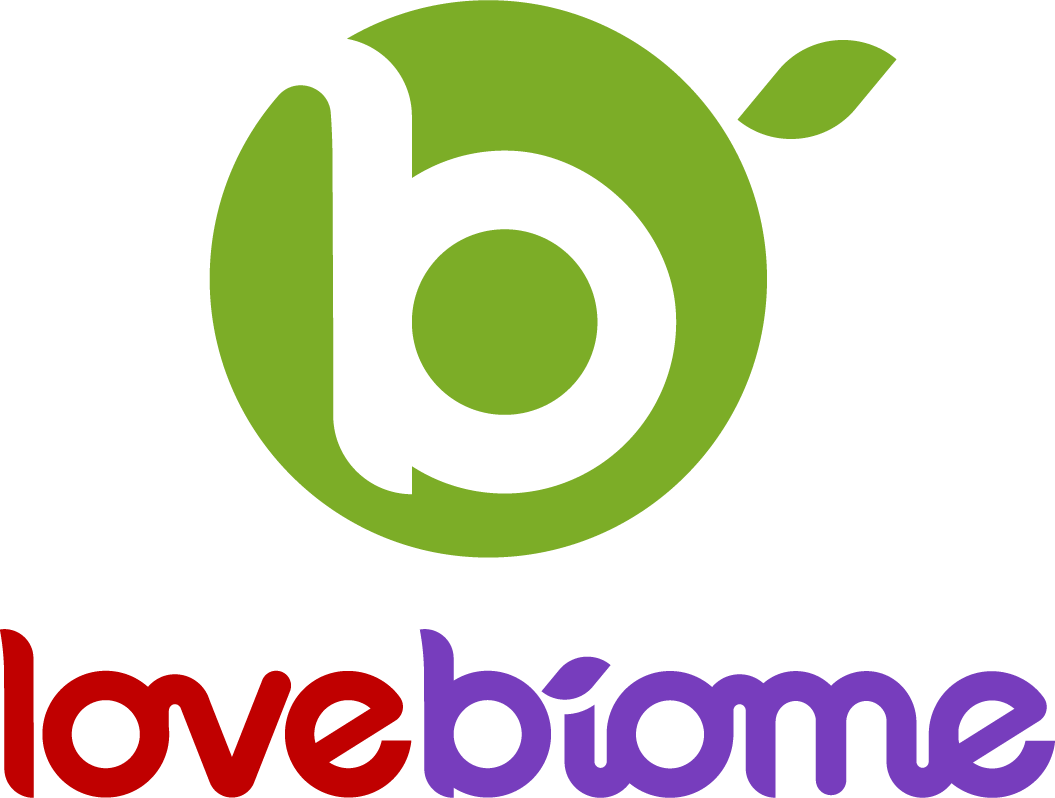Plant Life Gives Life – Polyphenols
By: Zach Aanderud Ph.D.
A look into LoveBiome’s rich polyphenol botanicals as prebiotics (i.e., green, red, yellow, and purple nutrient-dense botanicals, and red-light ferment) is essential for good health. The focus on plant-based prebiotic diversity is essential for gut microbiome health and overall health. Includes an introduction to your digestive tract, prebiotics, and the gut microbiome.
Our Earth offers innumerable plant-based resources waiting to be harvested and enjoyed by humans like us. But unfortunately, 75% of the plant-based food we eat comes from three basic grains: corn, wheat, and rice. In addition, the modern-day supermarket provides relatively few additional plant-based foods that make sporadic appearances in our diet.
However, across the Earth, a plethora of plant diversity abounds. For example, family gardens contain innumerable varieties of plant species cultivated for generations including purple carrots, leeks, goldenberry, black currant, and the Ponkan orange. Exotic spice markets house medicinal remedies like turmeric and baobab powder, prized for their healing benefits. Exotic and wild areas bloom with fruits from tropical rainforests such as amla (Indian gooseberry), jack fruit, moringa, sea buckthorn, and noni. Ancient sources retain the traditional knowledge that unlocks the benefits associated with species like dulse weed, kelp, prickly pear cactus, marigold flower, rosehips, and purple coneflower.
Within plants is the power of life. All plant-based foods contain dietary polyphenols, and a more diverse exposure to multiple plant species in our diets provides us with a more diverse assembly of dietary polyphenols. Dietary polyphenols are one of the most abundant and widely distributed natural products in plants and are divided into four categories: phenolic acids, flavonoids (the largest subclass of polyphenols), polyphenolic amide, and other non-flavonoids. The main dietary sources of these compounds include fruits, vegetables, grains, chocolate, green tea, coffee, and wine.
Polyphenols are what are called secondary metabolites. The plant doesn’t necessarily need the polyphenol for basic photosynthetic and metabolic activities, but these compounds protect plants against reactive oxygen species, ultraviolet radiation, pathogens, parasites, and predators.

Polyphenols possess amazing benefits for us by providing numerous antioxidants that help the body with the following:
- Reducing the free radicals created during digestion
- Supplying a rich source of anti-inflammatory, anti-bacterial, and neuro-protective agents and/or properties (Wang et al 2022)
- Offering essential vitamins and minerals to support complex polymer formation
- Broadening our diet further from just simple sugars and complex carbohydrates (like those found in grains).
Additionally, polyphenols are prebiotics—sources of food for our gut’s healthy bacteria. By embracing a high-plant-diversity diet, we dramatically benefit the most underrated “organ” in our bodies, our gut microbiomes. The gut microbiome directly or indirectly impacts all other systems in our bodies.
The gut microbiome consists of the microorganisms and their genetic material within our digestive system. For the most part, these organisms are single-celled bacterial species that are the most metabolically diverse organisms on Earth. The bacteria in your gut play an essential role in the digestion biotransformation and metabolism of polyphenols into metabolites, which are readily absorbed and contribute to a host of healthy benefits.
When food enters your mouth, it begins a 24- to 36-hour journey through 250–400 square meters of your gastrointestinal tract spending approximately 25-60 minutes in your stomach, 2-5 hours in your small intestine, and approximately 25 hours in your large intestine. During this time, the diversity and number of bacterial species increase in the distal portion of our gut, from duodenum to ileum, creating the most densely populated space of any ecosystem on Earth.
The large intestine houses 39 trillion bacteria and is the location where beneficial bacteria may provide a myriad of health benefits to us.
Harnessing the health benefits of our gut microbiome dietary polyphenols is key. Polyphenols are more chemically complex allowing these chemicals to pass unabsorbed through the small intestine and accumulate in the large intestines feeding the host of beneficial bacteria that colonize the gut. Alternatively, when we eat chemically simple sugars like glucose or sucrose, all bacteria in the gastrointestinal tract may use the energy providing little support specifically to the health-promoting bacteria in our large intestines. Also, digesting polyphenols often requires the cooperation of multiple bacterial species enhancing the populations of bacteria residing in your large intestine. Feeding the immense density of bacteria in your large intestine supports a diverse, balanced, and healthy gut microbiome generating a myriad of health benefits for the host.

For example, polyphenols increase the beneficial bacteria in our gut while simultaneously selectively inhibiting the growth of pathogenic bacteria (Wang et al 2022; Huang et al 2015). Polyphenols like tannins in pomegranate and grapes, gingerol in ginger, and those found in fermented noni fruit extract may promote the growth of Bifidobacterium and Lactobacillus, both beneficial gut microbiome genera. Alternatively, ellagic acid and anthocyanins in raspberry juice and grape polyphenols may inhibit the growth of disease-causing strains of bacteria, such as Ruminococcus and Clostridium species, respectively.
Additionally, polyphenols may promote high levels of bacterial species richness that act against obesity by modulating the development of adipose tissue and obesity-induced inflammatory genes (Correa et al 2019).
Finally, the metabolites generated from polyphenols by gut bacterial species may act as neurotransmitters crossing the blood-brain barrier creating our microbiome-gut-brain axis modulating many of our emotions (Filosa et al 2018).
We are supraorganisms, living in a symbiotic relationship with billions of bacteria that are directly influenced by what we eat. During an average lifespan, about sixty tons of food and a huge number of external microorganisms traverse the gastrointestinal tract, jeopardizing gut integrity. Ultimately, a rich diversity of plant-based polyphenols in our diets directly benefits our gut microbiome and our health.
LoveBiome celebrates plant-based polyphenols. We know that plant life gives life. We examined over 400 unique globally sourced botanicals for their benefit and synergy. This examination led to the final selection of over 90 unique ingredients for the Daily 3 System to maximize polyphenol power.

About the Author
Zach Aanderud holds a Ph.D. and is a professor of microbial ecology and biogeochemistry at Brigham Young University. He was born and raised in Portland, Oregon, and was educated at BYU, the University of California Davis, and Michigan State University.
References
Correa TAF, Rogero MM, Hassimotto NMA, Lajolo FM (2019) The two-way polyphenols-microbiota interactions and their effects on obesity and related metabolic diseases. Frontiers in Nutrition. DOI: 10.3389/fnut.2019.00188
Filosa S, Meo FD, Crispi S (2018) Polyphenols-gut microbiota interplay and brain neuromodulation. Neural Regeneration Research. DIO: 10.4103/1673-5374.241429
Huang HL, Liu CT, Chou MC, Ko CH, Wang CK (2015) Noni (Morinda citrifolia L.) Fruit Extracts Improve Colon Microflora and Exert Anti-Inflammatory Activities in Caco-2 Cells. Journal of Medicinal Food. DIO: 10.1089/jmf.2014.3213
Singh AK, Cabral C, Kumar R, Ganguly R, Rana HK, Gupta A, Lauro MR, Carbone C, Reis F, Pandey AK (2019) Beneficial effects of dietary polyphenols on gut microbiota and strategies to improve delivery efficiency. DOI: 10.3390/nu11092216 Wang X, Qi Y, Zheng H (2022) Dietary polyphenol, gut microbiota, and health benefits. Antioxidants. DIO: 10.3390/antiox11061212






